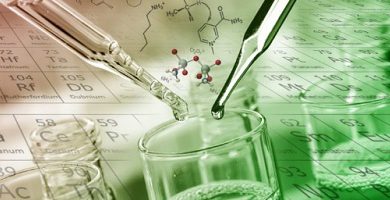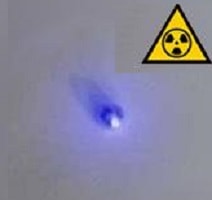Different Types Of Alkenes And Examples in Chemistry
An alkene is the result of the loss of two hydrogen atoms in an alkane, resulting in the formation of a two-carbon double covalent bond. There are different types of alkenes. Therefore, to designate alkenes, the ending “ano” is replaced, corresponding to alkanes, by the ending “eno”. Chemical Formula of alkene:

What is an alkene?
Alkene is an organic compound of unsaturated hydrogen and carbon, which means that it has at least one carbon double bond in its structure and can also have more than one bond. Another name by which alkenes are known is olefin , its characteristic formula is that of ethylene C n H 2n. Among the most common alkenes are ethene, butene, and propene.
Unsaturated hydrocarbons are widely distributed in nature, but not in the form of natural compounds, but in the form of decomposition derivatives.
An example is EThene, which is derived from carbon dioxide in plants.
Ethylene helps the germination of the seeds, the ripening of the fruits and also favors the growth of the said plant, therefore they are used synthetically in the food industry to facilitate the ripening process of fruits and vegetables by chemical processes.
Alkenes exist in gaseous, liquid and solid states, depending on the number of double carbon bonds present. Chemically, alkenes are more reactive than alkanes, which means they form other substances with different conformations and characteristics.
Physical Properties of Alkenes
-
The physical state.
Members with two or four carbons are five to seventeen gases, eighteen liquids, solid at room temperature, and burn in air with flames and smoke.
-
Density:
Alkenes are lighter than water.
-
Solubility:
Alkenes are insoluble in water and soluble in organic solvents such as benzene, etc.
-
Boiling point
The boiling points of alkenes gradually increase with increasing molecular weight or chain length, which indicates that the intermolecular attraction becomes stronger with increasing molecular size.
-
Melting Points
The melting point of alkenes depends on the packing of the molecules.
Alkenes have the same melting points as alkanes, however, in cis isomers, the molecules are packaged in a U shape and hence, will have lower melting points than trans isomers.
Classification of Alkenes:
Alkenes that have two, three, and four alkyl groups attached to the double bond carbons are Disubstituted, Trisubstituted and Tetrasubstituted, respectively.
1. Monosubstituted
RCH=CH2
2. Disubstituted
RCH=CHR or R2C=CH
3. Trisubstituted
R2C=CHR
4. Tetrasubstituted
R2C=CR2
15 Examples of Alkenes
- Ethylene (CH 2 =CH 2)
- 2-methylpropene
- Propene (CH 2 =CH–CH 3)
- 2-Butene CH 3 –CH=CH–CH 3
- 2,3-butadiene
- Myrcene
- Limonene
- Geraniol
- Lycopene
- Lanosterol
- Menthofuran
- Tetrafluoroethylene
- 1,3,5,7-cyclooctatetraene
- 5-bromo-3-methyl-3-hexene
- 3,5-diethyl-4-propyl-2,5-dimethyl-2-heptene
- Cyclohexene
What are the 7 Types Of Alkenes?
According to its structure, the name of the alkene is given by the place occupied by the covalent double bond C=C (carbon carbon) in the molecule. In this sense, these are the following types of alkenes:
1. Ethylene CH2 = CH2:
It is the most widely used hydrocarbon-derived organic compound in the oil-based chemical industry, as it is used to create insulating plastic materials for construction, such as pipes and containers.
2. Propylene CH2 = CH – CH3:
It is a hydrocarbon from which the textile industry obtains a semi-synthetic material for making nets, strings and filters.
3. Butene 1 CH2 = CH – CH2 – CH3 and Butene 2 CH3 – CH = CH – CH3:
Butenians are colorless gaseous alkenes used in the production of gasoline and various alcohols in the hydrocarbon industry.
4. Pentene 1 CH2 = CH – CH2 – CH2 – CH3 and pentene 2 CH3 – CH = CH – CH2 – CH3:
Pentenes are saturated hydrocarbons with a wide range of functions, including fuel production, pesticide production and rubber processing.
5. Hexene 1 CH2 = CH – CH2 – CH2 – CH2 – CH3 and hexene2 CH3 – CH = CH – CH2 – CH2 – CH3:
These are alkenes, from which fragrances, flavors and dyes are obtained.
6. Heptene 3 CH3 – CH2 – CH = CH – CH2 – CH2 – CH3:
It is a chemical compound from which several aldehydes of the hydroformylation process are derived.
7. Octene 2 CH3 – CH = CH – CH2 – CH2 – CH2 – CH2 – CH3:
Octene is a hydrocarbon compound which is used to create plastics, to synthesize organic compounds and plays an important role in medicine for the treatment of neurological conditions.
Read Also: Alcohols: Definition, Types And Formula in Chemistry
Uses of Alkenes
- Production of plastic materials such as polyethylene for the production of buckets, bowls, bags, etc.
- Manufacture of polystyrene used in the production of car battery boxes and spare parts for refrigerators.
- The Manufacture of ethane-1,2-diol used as an antifreeze for automobile radiators.
- Manufacture of synthetic fibers of ethanol and terylene.
- Manufacture of anti-duct agents for automotive engines.
- Manufacture of plastic, polypropylene for the production of strings and packaging material.
- Manufacture of propanol used in the production of acetone.
- Acrylic fiber manufacturing.
External Source:
https://chem.libretexts.org/Courses/Case_Western_Reserve_University/CHEM_121%3A_Concepts_for_a_Molecular_View_of_Biology_II_(Cunningham)/1%3A_Organic_Chemistry_Basics/1.10%3A_Alkenes%3A_Structures_and_Names
For More Information



